9 heating types – and how to pick the best one for your home, according to HVAC experts
What may work in one home may not be suitable for yours, experts warn

Hayley Gilbert
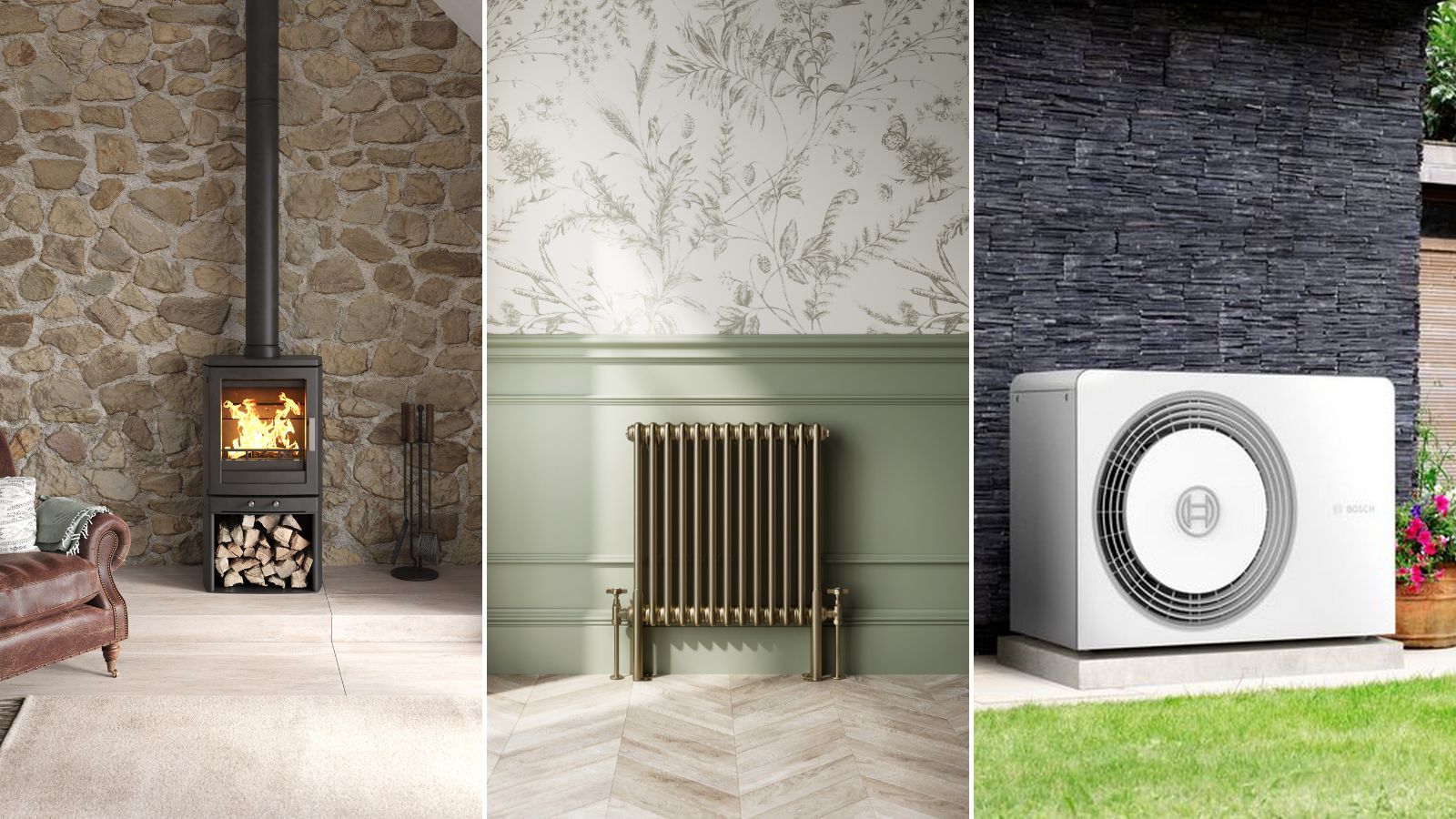
It's not every day that you think about the heating type that's installed in your home.
However, with costs increasing across the board, it doesn't hurt to weigh up some alternative home heating types, HVAC experts say. Plus, if you live in a house for long enough, the heating system is going to need care, maintenance and eventually, replacing.
Here, our HVAC pros detail the nine most common home heating types, how they work, and the pros and cons of each to help you decide which type of heating is the cheapest to run for your property.
What are the different types of home heating?
From traditional radiator systems to eco-heating, there are so many heating options to pick from. It is worth remembering, however, that what works for one property may not be efficient in another.
Here's how to pick the best home heating type for you:
1. Forced air heating and cooling systems
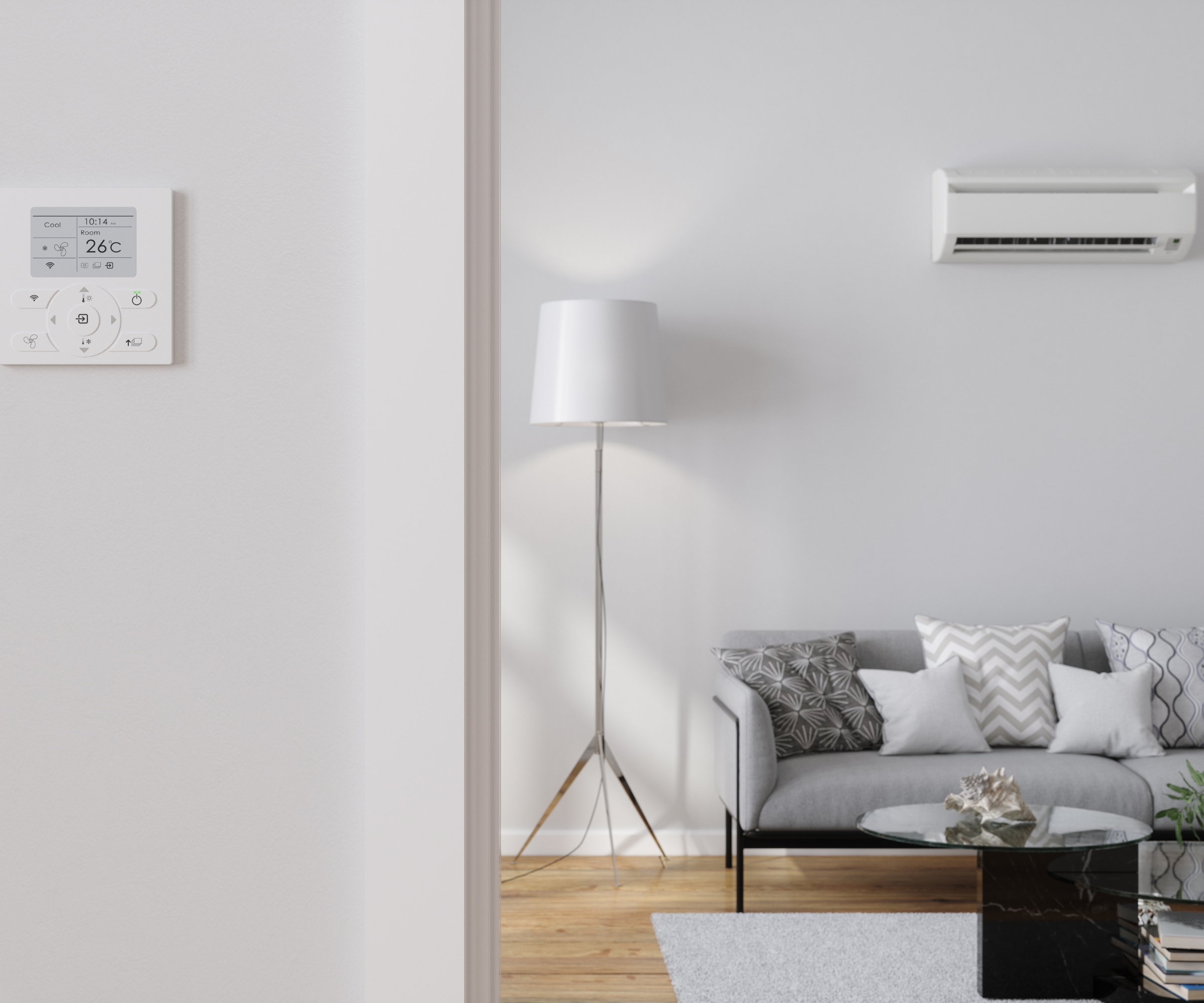
A combined forced air and cooling system is one of the most popular and efficient home heating types.
Best for: Climates that benefit from heating and cooling throughout the year.
Design expertise in your inbox – from inspiring decorating ideas and beautiful celebrity homes to practical gardening advice and shopping round-ups.
Fuel type(s): The furnace can use a number of fuels depending on what’s available to you and the cost you are happier with. There’s natural gas, liquid propane, fuel oil, and electricity. Use air filters and humidifiers to prevent the air from becoming too dry and if anyone in your home suffers from allergies.
Costs: Alex Woollam of Pink Plumbing says, 'Cost-wise you’re talking anywhere from $5,000 to $10,000 to install a new system.
A forced air system uses a furnace with a blower fan to force warm air into all rooms via ducts (so long as you regularly clean vents around your home to keep it efficient). The benefit is that you can adjust the temperature easily and quickly, and you can also have your air conditioning running through the same ducts so you get two in one.
‘Forced air heating and cooling systems can be costly,' Alex adds, 'but there are many factors to consider when making this decision. The main cost associated with installing and running these systems is the energy required to power them. Additionally, you will need to factor in monthly maintenance fees and attic or basement repairs that may be needed.
'To ensure optimal performance, forced air heating and cooling systems require regular cleaning of filters and ducts. In some cases, entire system replacements may also be necessary due to wear and tear on components or failures.’
Pros:
- Added filters can help to filter the air to prevent dust in a home and improve air quality indoors.
- Modern systems have one of the highest annual fuel utilization efficiency of any heating system
- You can cool and heat with one system, perfect for changing weather patterns.
Cons:
- Expensive to install and requires extensive ductwork inside walls.
- Can make a house feel dry, requiring humidifiers to balance humidity levels.
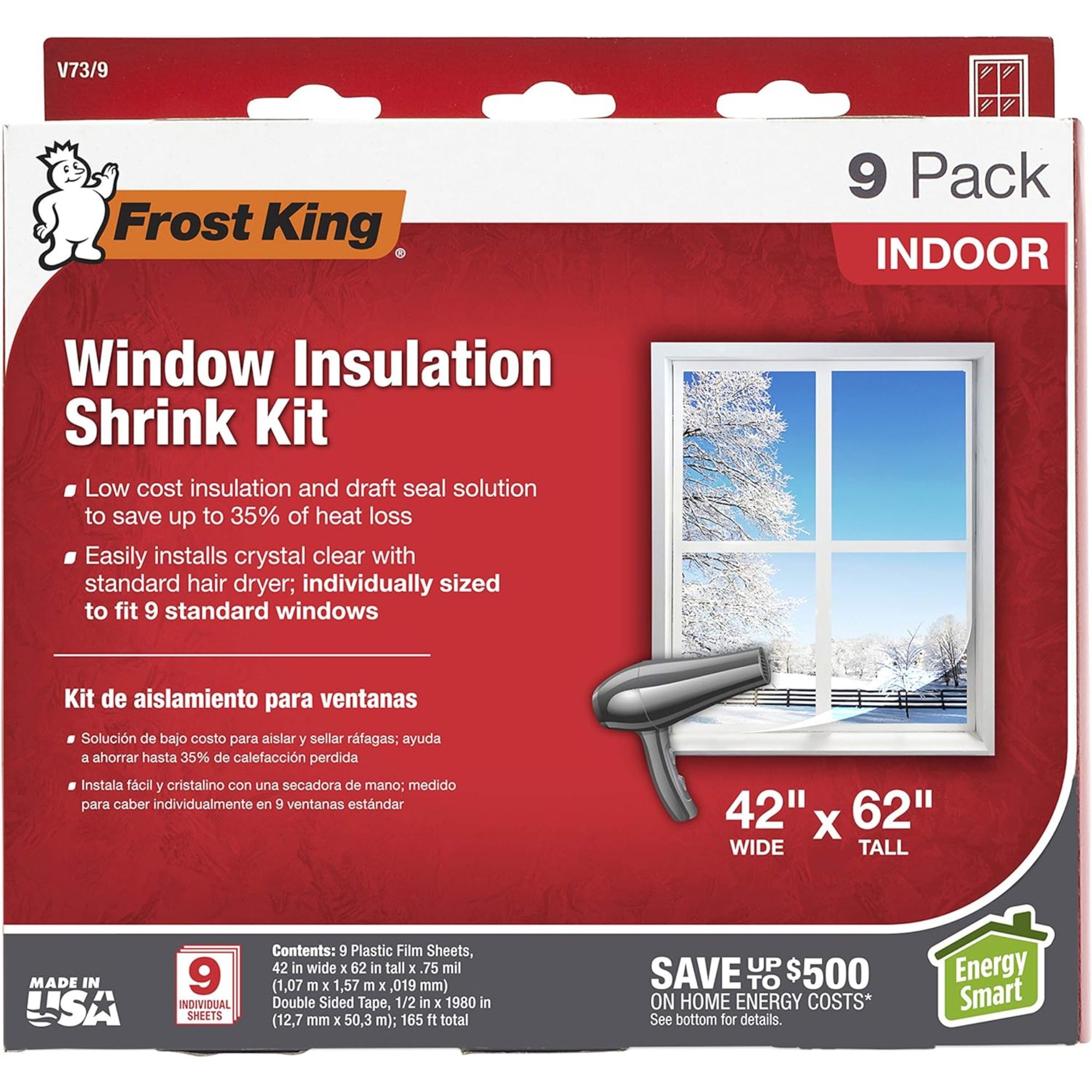
Insulation is just as important as your heating system. This window film adds an extra layer of protection against cold air transfer for more efficient home heating types.

Weatherstripping creates a tighter seal around windows and doors to draft-proof your home and make heating it easier.
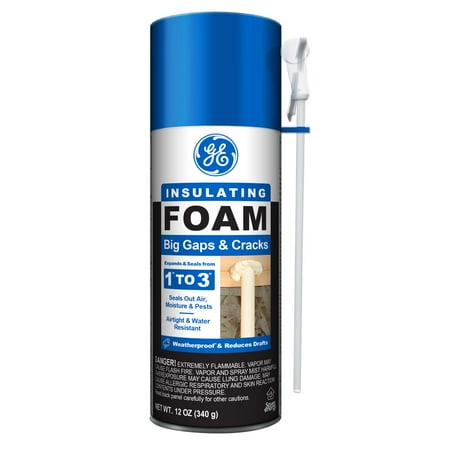
This expanding foam helps to seal up gaps with ease, preventing air transfer to keep heat in and lower energy bills.
2. Gravity air furnace systems
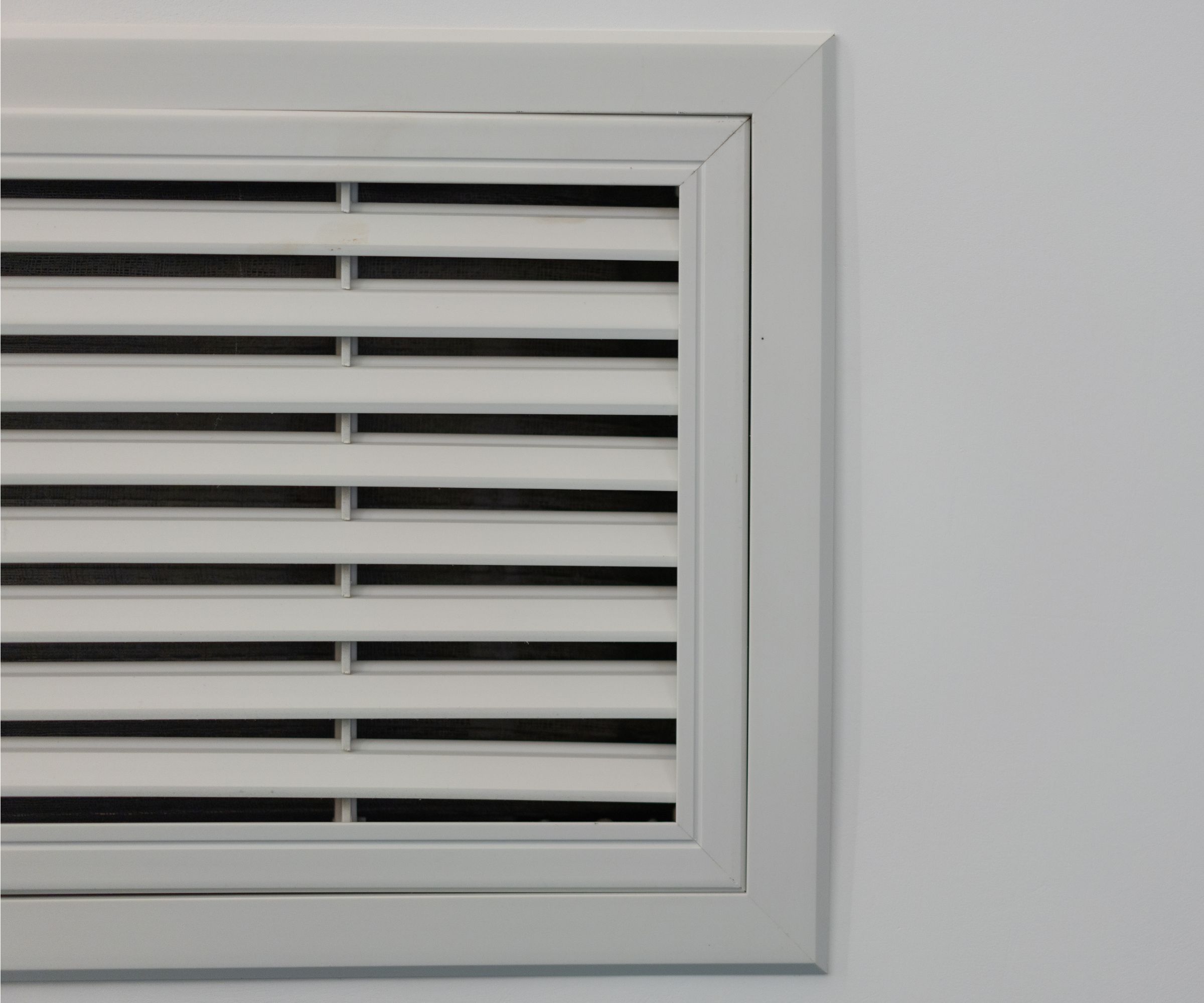
When you want a low-maintenance solution, gravity air furnaces also deliver warm air through wall ducts to each room. However, instead of forcing the air (like the forced air system above), gravity systems work on, well, a simple gravity method.
This means that warm air rises and cool air sinks, naturally. So, a gravity air furnace in the basement will work by heating the air, which rises and distributes through ducts into each room.
Best for: Homeowners who don't want to think about maintenance.
Fuel type(s): Usually powered by natural gas, liquid propane, or fuel oil.
Costs: Price-wise, the cost of installing a new one ranges from around $8,000 to $10,000 with running costs at around $50 to $100 per year.
Pros:
- Limited moving parts, meaning they last a long time with relatively few hiccups.
- Requires little maintenance besides cleaning and occasional servicing.
- Runs quietly.
Cons:
- Do not come with air filtration systems, meaning you might need the best air purifiers to maintain air quality indoors.
- Less energy efficient than modern systems.
- Can be slow to warm up.
3. In-floor radiant heating systems

For warmer climates where winterizing a house isn't so much of an issue, in-floor radiant systems use plastic tubes filled with water, which are laid underneath concrete or timber floors.
This is one of the quietest heating methods, which is also really effective – eliminating hot and cold spots – and super-efficient, too with lower running costs.
Best for: Climates with mild winters or smaller rooms like bathrooms.
Fuel type(s): Usually hot water, heated by a central boiler fuel by natural gas or electricity.
You can also run an in-floor radiant heating system with electrical wires instead of water-filled pipes. This is the preferred option when you have ceramic or natural stone tile flooring, however they will cost more to run.
Costs: For both water and electric in-floor systems, you’re talking between $1,800 and $6,000 and a larger area should bring the cost per square foot down.
Pros:
- Heats rooms evenly and consistently.
- Can be powered by solar energy.
- An energy-efficient way to heat a home with a boiler.
Cons:
- It might take a little longer to heat a room.
- Issues can be more difficult to solve as the pipes are harder to access.
- Can be difficult and expensive to install, with major disruption to rooms as flooring is removed.
4. Traditional boiler and radiators
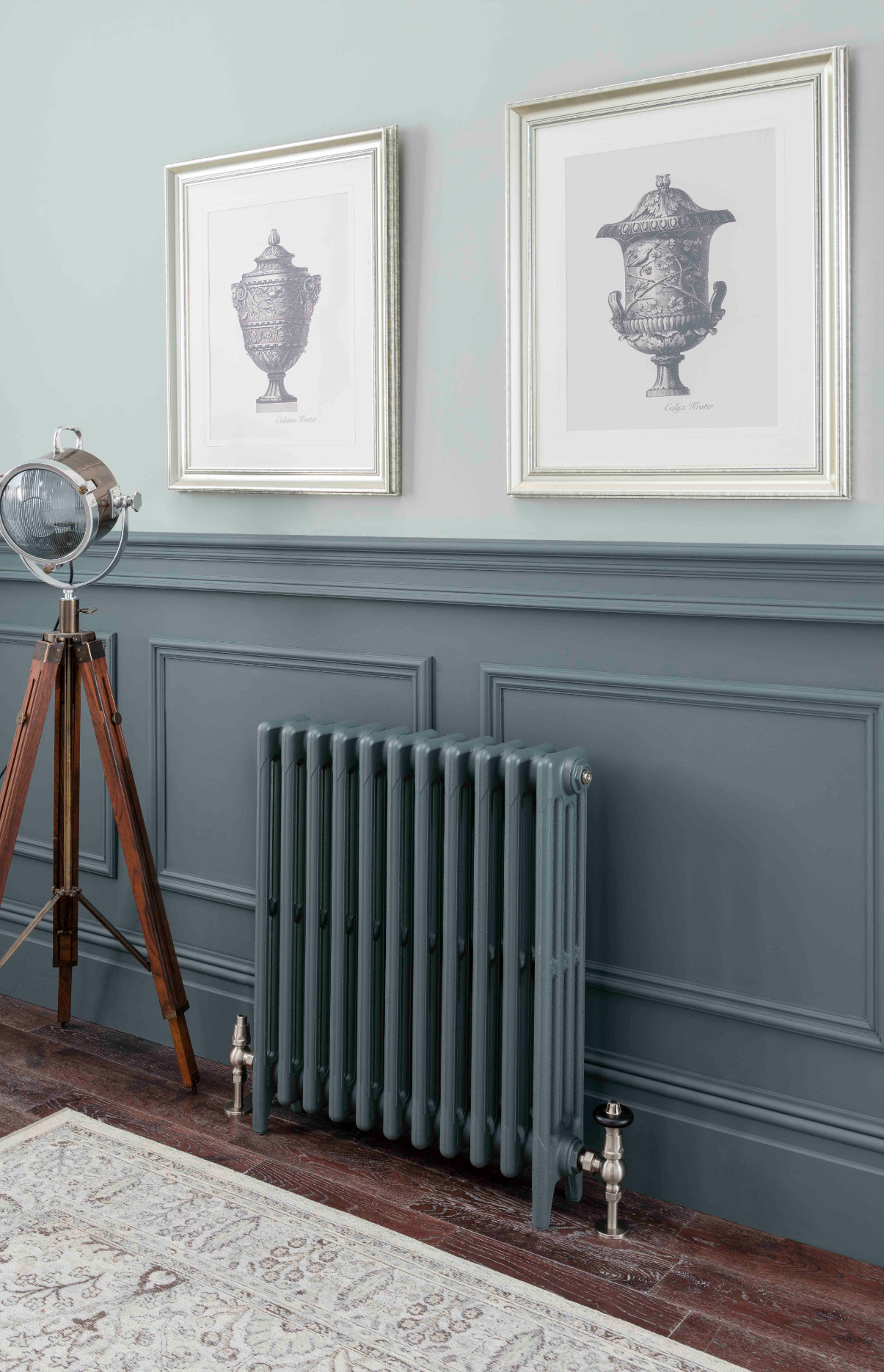
When you want radiant heat all around the home, a traditional boiler with radiators on the walls is the most efficient solution.
This kind of system works via the boiler circulating steam or hot water through pipes to the radiators. Aluminum radiators are energy-efficient and lightweight and are available in a wider range of shapes, sizes, and colors to suit any home. You can also paint a radiator to help them blend in.
Best for: Heating whole homes at the same time.
Fuel type(s): Boilers are usually powered by natural gas, liquid propane, fuel oil, or electricity.
Costs: Boilers on average will cost from $3,000 to $6,000 to install while new radiators can cost anywhere up to $1,500 each.
Pros:
- Do not dry out the air like forced air systems.
- Radiators can be swapped out for different styles and types for aesthetic purposes.
- Newer boilers make radiators very energy efficient.
Cons:
- No option for cooling air.
- Radiators are very visible on walls, especially in comparison to floor heat vents.
- Radiator location can limit decorating options.
- It is difficult to clean behind radiators, meaning they get very dusty.

Josh Mitchell, HVAC pro at Air Conditioner Lab says, 'This is easy to use and great for people looking to monitor and control oiler-controlled heating remotely. It also provides energy-saving suggestions based on your patterns.'
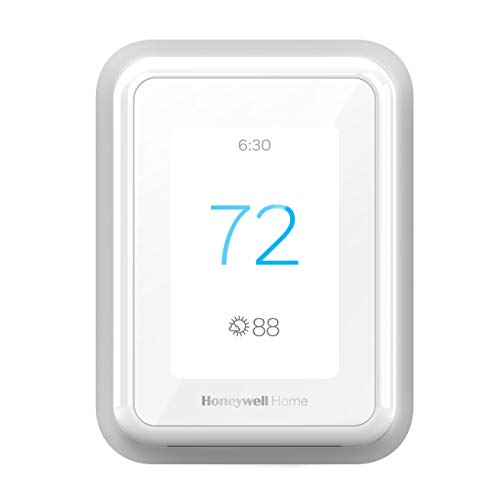
This has a touchscreen display and is compatible with Alexa. Josh recommends it and says, 'This model includes room sensors to prioritize heating in occupied areas, adding comfort and efficiency.'
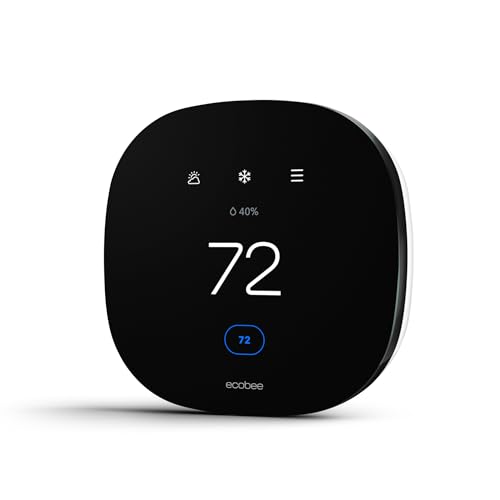
Josh rates this thermostat and says, 'This is another excellent option for smart control and energy savings. It integrates well with Alexa and other smart systems.' That includes Siri and Google Assistant. This is ENERGY STAR Certified and has a touchscreen.
5. Hot water baseboard radiators
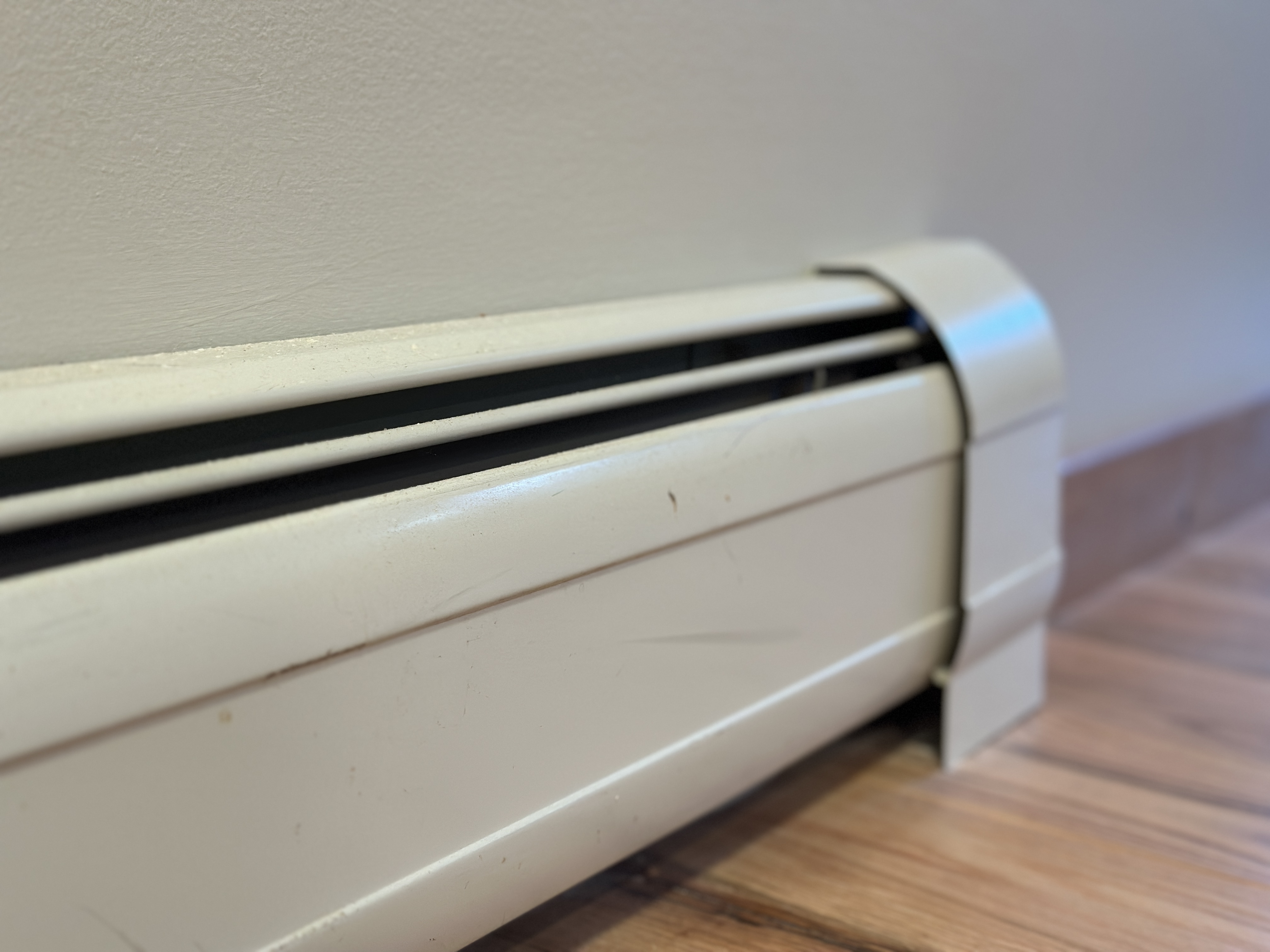
Baseboard heaters are a mix between in-floor radiant systems and radiator systems. They operate on a hydronic system, using a boiler to heat water, which is then delivered through pipes to baseboard heating units.
Best for: Smaller spaces or homes with warmer winters.
Fuel types(s): You can power boilers with electricity, fuel oil, natural gas, or liquid propane as well as solar panels for a really energy-efficient solution.
Costs: It’s a pretty durable solution with costs between $500 and $1,200 to install new.
Pros:
- Last a long time.
- Very energy efficient, especially when powered by solar.
- Allows for precise temperature control.
Cons:
- Cannot be covered, limiting furniture placement.
- Does not have a cooling system.
- Slow to heat up.
6. Heat pump heating systems

An extremely energy-efficient option is the air-source heat pump. These work by extracting heat from the air and delivering it inside your home via an indoor air handler. You can also buy ground-source heat pumps, which take heat from the earth, or water-source, which use a nearby pond or lake.
Alex Woolham, master plumber, explains, 'There are many different types of heat pumps on the market today that vary in efficiency, features and price range.’
‘It's important to select the right one for your needs based on factors such as climate zone, insulation level, occupant load, ductwork restriction, and room layout. Once you have decided which type of heat pump to buy or install, consult with an experienced HVAC contractor who will walk you through all the details so that everything goes smoothly from start to finish.’
Punteha van Terheyden, head of Solved recently upgraded her air source heat pump system. She says, 'The first one was sub-standard and cost us so much money in extra energy bills, the system was flukey and always turning off, and it was installed badly, and too close to our house meaning it wasn't working efficiently. It was very loud too. Our new system was superior in cost, but infinitely superior on function. It's also silent, works without any glitches and has driven our energy bills properly down.'
She advises if you're picking an ASHP system, do your research, be prepared to spend more for a superior system, and make sure the installers are not rogue traders.
Best for: heating and cooling in mild climates
Fuel type(s): Powered by electricity, but there are natural gas models available.
Costs: How much does it cost to run a heat pump? Installing and running a heat pump heating system can be costly, depending on the size of your home and the type of heat pump you choose.
Alex says, ‘The average residential installation costs around $15,000 to $20,000 plus, but if you're looking to cut your energy bills and increase your indoor comfort levels during colder months, then a heat pump is an ideal choice.'
Pros:
- Heating and cooling combined.
- Energy-efficient and affordable once installed as they deliver more energy than is consumed.
- Precise temperature control for each room.
- A very sustainable option for those conscious of their energy footprint.
Cons:
- Only worth the investment in mild climates.
- Distribution of air can be limited.
- Each unit needs to be controlled in each room individually, making it less simple to control than a radiator system.
- Ground-source pumps are more efficient than air-source, but are disruptive to install and are dependent on your land.
- Outdoor units can be noisy.
7. Electric resistance heating systems
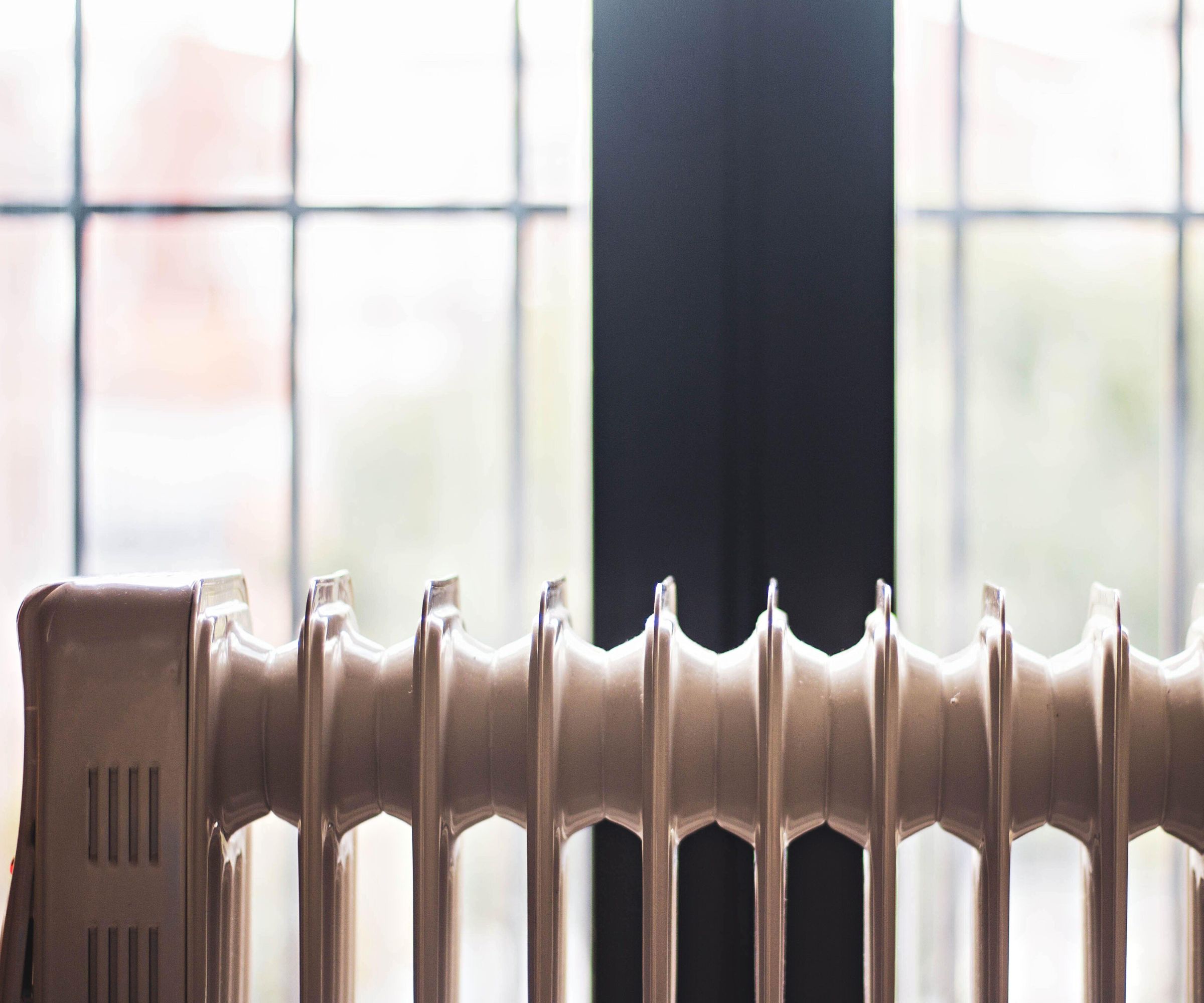
Electric resistance systems such as standalone heaters or plug-in wall-mounted radiators and baseboard heaters are great or supplementary heat, but we would not recommend them as the sole heat source for a regularly used room or property.
Ty Pennington, home renovation expert and brand partner at American Standard Heating and Air Conditioning says, 'Even if you have your HVAC system set to 71 degrees, you may want a portable heater in the room where you’re spending the most time, just to keep it at a temperature you really like in the winter when you crave that extra warmth. It's so much better than heating your whole house to 75 degrees – this makes your HVAC work constantly and it wastes a lot of energy and money.
'In terms of designs, there are portable heaters that look like old-school radiators, which can blend more naturally into a home’s interior, and I would say stick to ones that are 10 years old or newer for efficiency and safety.'
Best for: Boosting other heating systems in lesser-used rooms such as home offices or sunrooms.
Fuel type(s): Electricity.
Costs: Plug-in units can start at around $450. They will use more in terms of energy, so running costs can be high, but it depends how much you use it.
Pros:
- .Can be used anywhere there is an outlet and requires no ductwork.
- Silent operation.
- Can add a little boost to existing heating systems to eliminate cold spots and keep a home warm all day.
Cons:
- Don't heat up whole rooms efficiently on their own.
- Expensive to run as they consume a lot of electricity.
8. Ductless mini-split
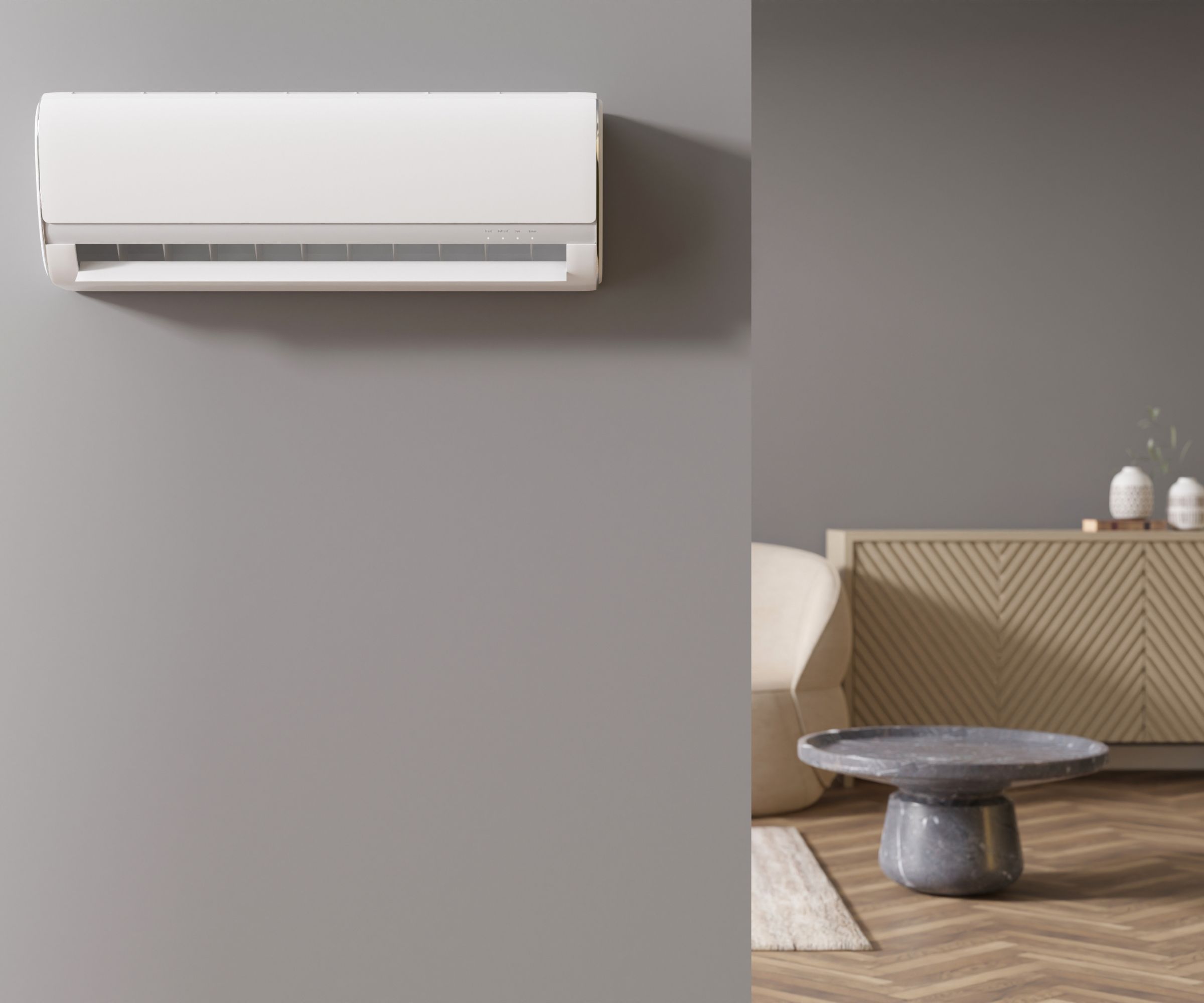
Ductless mini-split systems are a type of air-source heat pump that allows you to control the temperature in each room individually.
Paul Lambert, founder and CEO of HVAC brand Quilt explains, 'Rather than heating your entire home to make one room comfortable, you can target specific areas for maximum efficiency and comfort. The key is having a system that can adapt to your home's unique layout and your family's specific needs.'
Best for: Eliminating cold spots and better temperature control in mild climates.
Fuel type(s): Powered by electricity.
Costs: Costs can vary depending the the size of the system, ranging from $2,000 to $14,500.
Pros:
- Offers precise room-to-room temperature control, helping to heat basements or warm up your first floor.
- Energy efficient, allowing you to heat used rooms without heating unused rooms.
- Many modern models can be controlled via an app or other smart tech.
Cons:
- Expensive to install, and must be installed by a professional.
- Not ideal for very cold climates.
- Some models can be unsightly on walls.
9. Wood burning stoves
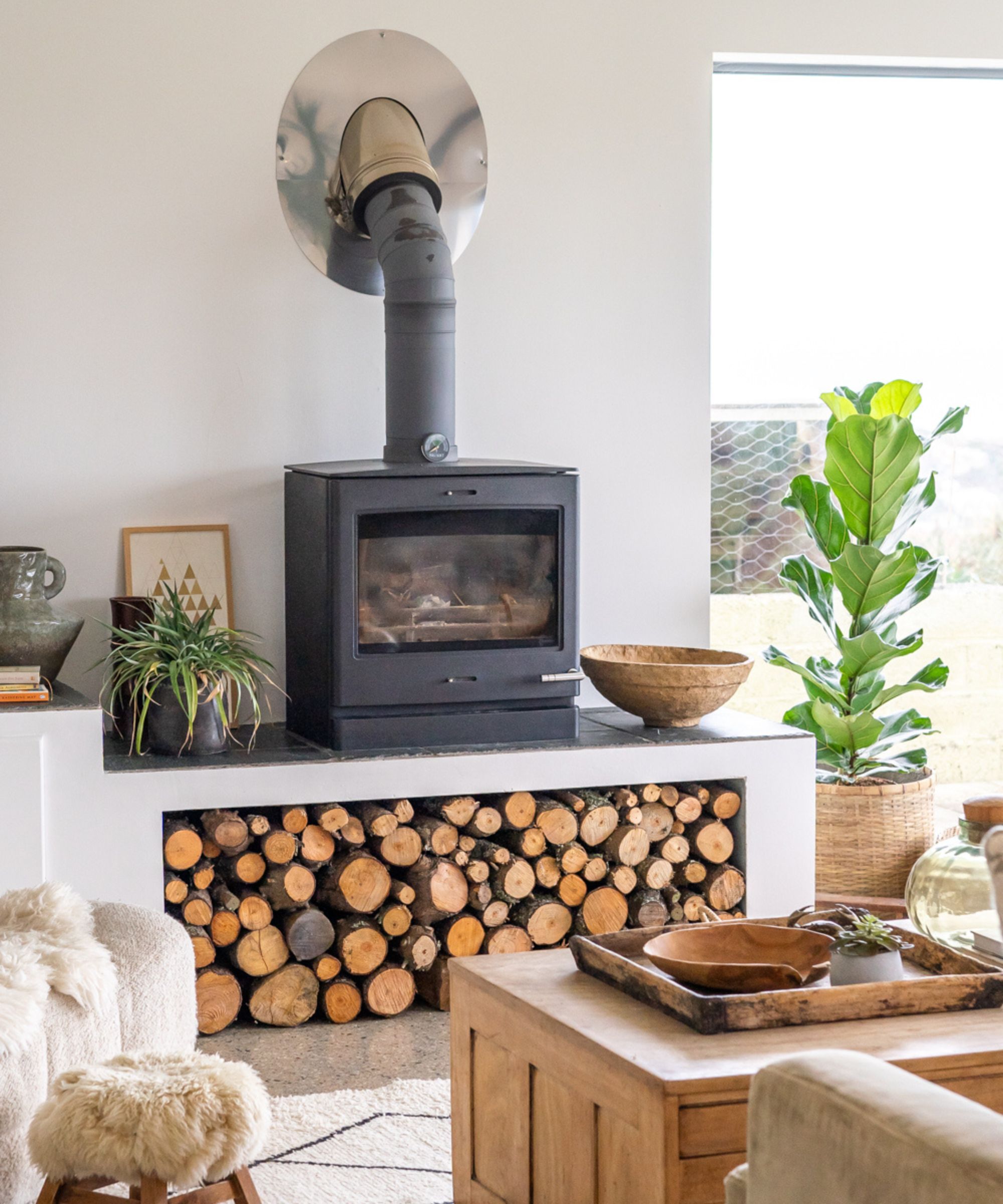
Wood burner ideas are a great way to make a home look cozy, and can be a great heating boost to homes that experience very cold winters. They are not, however, the most efficient way to keep a whole home warm anymore, even if they are more economical.
There are four main types of stoves you can choose for your home, including wood stoves, pellet stoves, outdoor wood furnaces, and masonry heaters.
Ty Penington adds, 'If your house doesn’t have a traditional fireplace, homeowners can invest in gas or electrical options that can be installed and operate more as an electrical heater for your first-floor rooms. As a designer, I look for ones that have a comfier and homier look, but still provide that extra warmth, so you can enjoy those areas of your home where you spend the most time.'
Best for: Making homes cozier economically.
Fuel type(s): Wood logs. Pellet stoves require compressed wood pellets and an electrical connection.
Costs: Installation costs for fireplace ideas can vary greatly. For log burners, it is an average of $325 to $4,000 depending on the type and size of the stove, the location, and the existing condition of any chimneys and flus. Pellet stoves can cost between $1,000-$3,000 to install.
Outdoor wood furnaces are a lot more expensive, ranging from $8,000-$14,000 to install on average, although this increases rapidly as the systems get larger. Masonry stoves are similar, starting at $8,000 for factory-built systems, and peaking at $20,000 for custom on-site builds.
Pros:
- Easy to source cheap fuel, and are economical to power.
- Very long-lasting, with many models lasting up to 25 years with proper care.
- With the exception of pellet stoves which can require electricity, they can help to heat your home when the power is out, making them ideal for climates with unpredictable weather.
Cons:
- Can be fire hazards if not properly installed.
- Smoke emissions are bad fo the environment and your health.
- Pellet stoves may go out in a power outage and require a generator.
- Need chimneys and a flu to be installed, limiting location options.
FAQs
What is the best type of heating for a house?
The best heating system for your home will depend on a range of factors.
Location Matters: Mark Woodruff, senior product manager at Trane Technologies says, 'One of the most important factors is location because certain climates are better suited for heat pumps than others. For example, heat pumps are typically a better option for mild climates, such as Florida, where the winter temperatures are around 30-40 degrees Fahrenheit. Furnaces make more sense for colder climates because they don’t depend on outdoor temperatures to convert to heat.'
Cost of Appliance: Mark continues, 'The overall installation cost of your furnace, heat pump, or dual fuel system depends heavily on your home’s compatibility and current system setup. For instance, some homes may not have access to natural gas, making an air conditioner and furnace installation a more expensive alternative to a heat pump system.'
Lifespan & Maintenance: Mark adds, 'A gas-fired furnace generally has a longer lifespan than a heat pump. Furnaces with proper maintenance can last 20 years or more. A heat pump, like an air conditioner, more commonly has a lifespan of 15 years. Additionally, dual-fuel systems blend the best features of a gas furnace together with a heat pump. A dual fuel system includes both a heat pump and a gas furnace and will operate the heat pump during milder temperatures when the heat pump is more efficient. The system automatically switches to the gas furnace as the outdoor temperature gets colder. Not only does this give the homeowner the best comfort in their house, but it switches back and forth between the heat pump and gas furnace depending on the most efficient option, saving homeowners the most money.'
Property size: Look at the size of your property, too. Smaller homes need less heat than larger ones, otherwise, you’re just wasting energy and money. Fuel is also one of the most important factors.
Fuel availability: You may also be restricted by what fuel is available in your area or you may have a preference due to efficiency or running costs.
Insulation levels: Alex Woollam, licensed plumber advises, ‘Verifying that you have an accurate insulation level is essential. If your house isn't adequately insulated, heat will escape through the walls and floors, resulting in higher energy bills.
Next, learn what is making your heating system work harder and how to remedy each one.

Chiana has been at Homes & Gardens for two years and is our resident 'queen' of non-toxic living. She spends most of her time producing content for the Solved section of the website, helping readers get the most out of their homes through clever decluttering, cleaning, and tidying tips. She was named one of Fixr's top home improvement journalists in 2024.
- Hayley GilbertContributing Editor